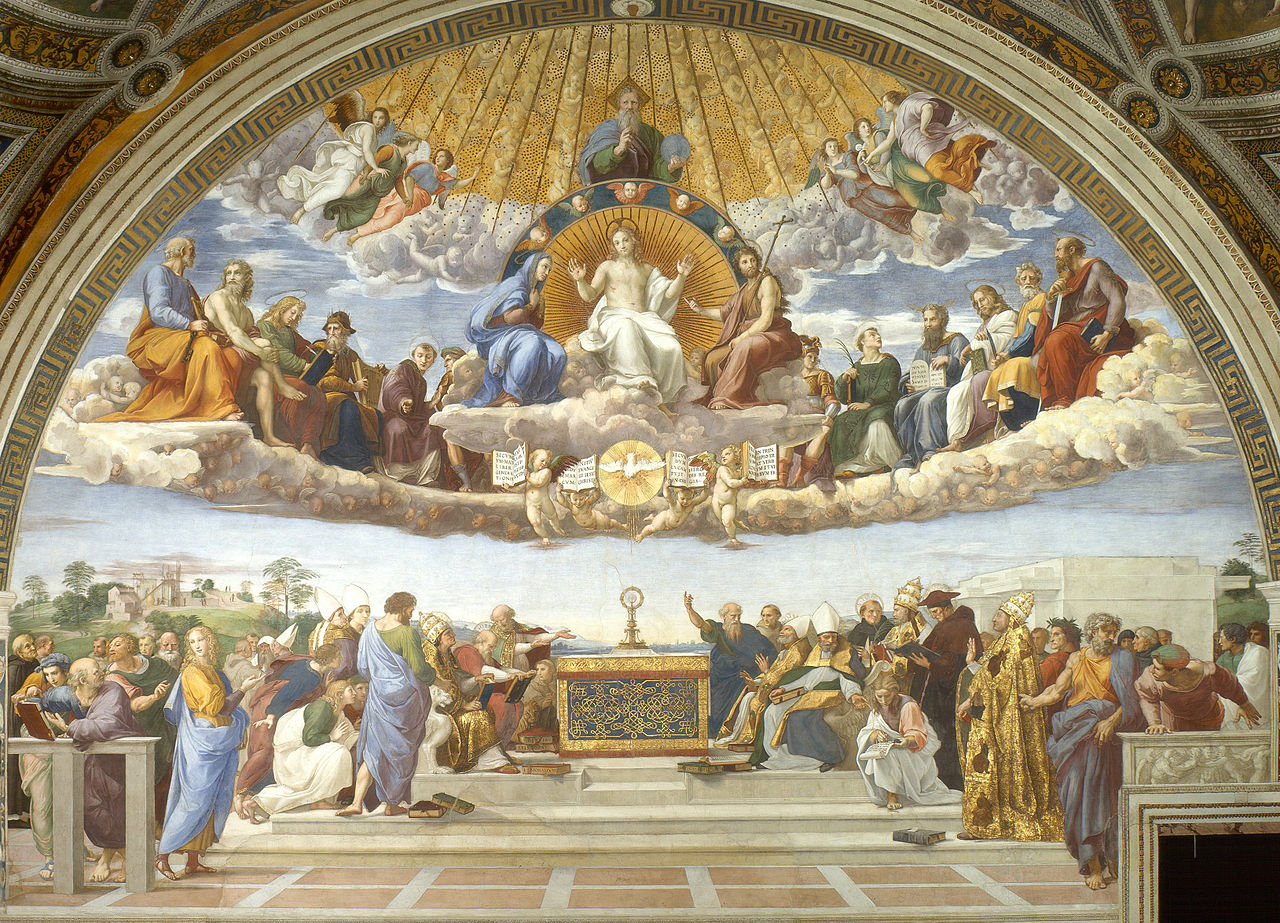
By Staff Middle Land
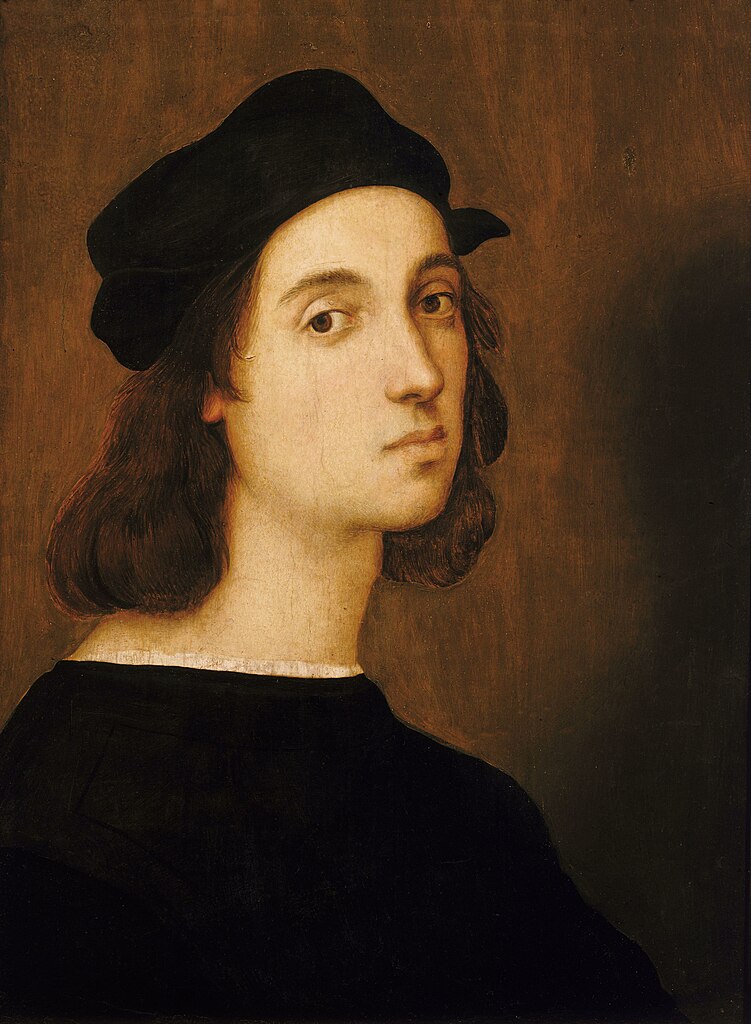
Por centuries Raphael has been recognised as the supreme High Renaissance painter, more versatile than Michelangelo and more prolific than their older contemporary Leonardo. Though he died at 37, Raphael’s example as a paragon of classicism dominated the academic tradition of European painting until the mid-19th century.
Raphael (Raffaello Santi) was born in Urbino where his father, Giovanni Santi, was court painter. He almost certainly began his training there and must have known works by Mantegna, Uccello, and Piero della Francesca from an early age. His earliest paintings were also greatly influenced by Perugino. From 1500 – when he became an independent master – to 1508 he worked throughout central Italy, particularly Florence, where he became a noted portraitist and painter of Madonnas.
In 1508, at the age of 25, he was called to the court of Pope Julius II to help with the redecoration of the papal apartments. In Rome he evolved as a portraitist, and became one of the greatest of all history painters.
He remained in Rome for the rest of his life and in 1514, on the death of Bramante, he was appointed architect in charge of St Peter’s. (Text: The National Gallery)
Featured photo, above: Disputation of Holy Sacrament: The Disputation, or simply “the Disputa,” was commissioned by Pope Julius II almost immediately after Raphael moved to Rome in 1508 as part of a huge project to paint the walls of the Stanza della Segnatura, the pope’s library quarters within the Vatican that are now referred to simply as the “Raphael Rooms.” (In fact, Michelangelo guffawed at the ostentatious youngster’s speedy appointment to the task, since the elder sculptor had to hang around the capital city shaking hands and kissing babies for months before finally landing his Sistine Chapel ceiling gig. The two did not get along.) The frescoes in the four chambers of the stanza each illustrate the best aspects of the human spirit, with the Disputation representing divine truth and depicting the relationship between heaven and earth, with the empyrean populated by Jesus and his coterie and the mortal realm thronged by figures ranging from the clergy to Dante. (Texto: ArtNet)
The School of Athens (1509-11)
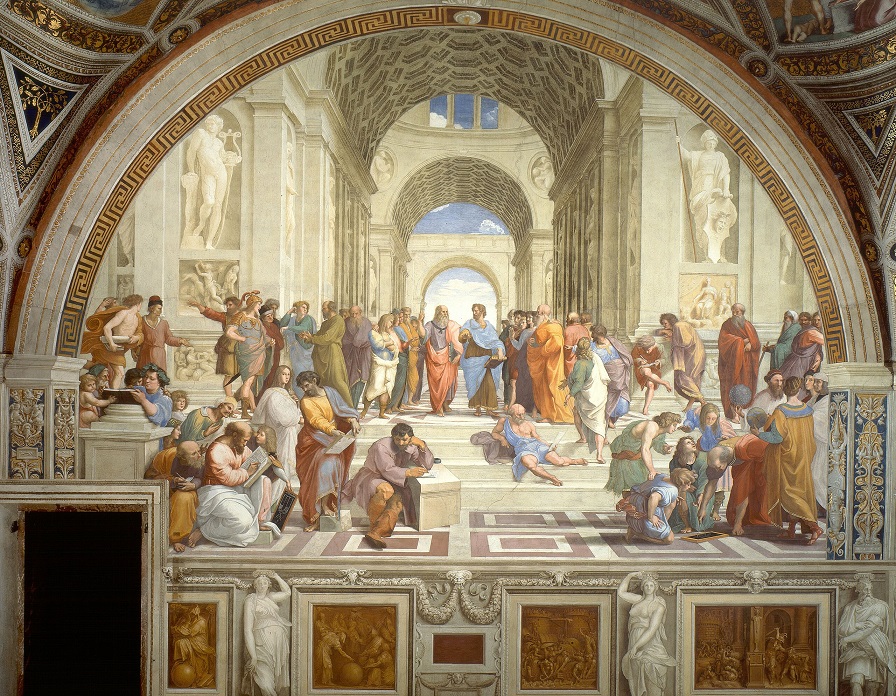
Regarded as Raphael’s greatest masterpiece, The School of Athens sits opposite the Disputation of the Most Holy Sacrament in the Stanza della Segnatura and represents worldly truth, i.e. philosophy. It’s a virtuosic wonder of perspective and populated by an intellectual who’s-who of Western thought from Plato and Aristotle to Ptolemy and Euclid. The painting tops our list of the artist’s most brilliant works because Raphael ostensibly knew he’d created something that would change the course of painting forever—after all, to show he knew just how good he was, Raphael went ahead and included himself in the scene, too, the same moody face of his earlier self-portrait. And why shouldn’t he have? It ain’t bragging if it’s true. As Vasari said:
“Nature had ample cause, on the other hand, to make clearly resplendent in Raphael all those rare virtues of mind, accompanied by as much grace, study, beauty, modesty, and fine manners as would have sufficed to cover up any flaw, no matter how ugly, or any blemish, no matter how large. As a result, It is safe to say that those who possess as many rare gifts as were seen in Raphael from Urbino are not simple mortals but (if it is permitted to speak in this way) mortal gods, and that those who by their endeavors leave behind in this world an honored name in the annals of fame can also hope to enjoy a worthy reward in Heaven for their hard work and merit.” (Texto: ArtNet)
La Fornarina (1518-20)
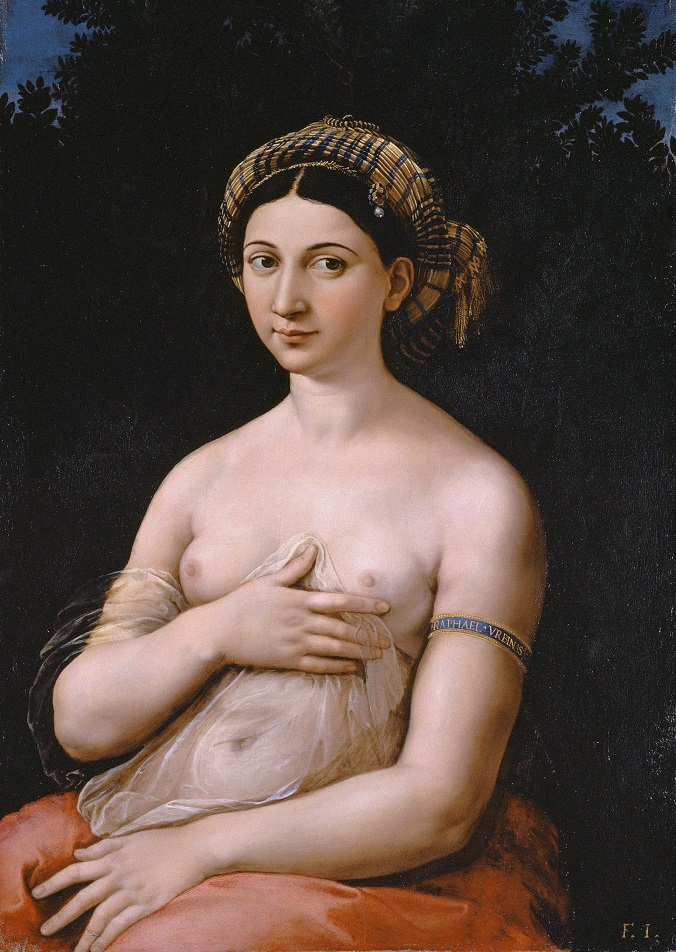
The Ritratto di giovane donna (Portrait of a young woman), generally known as La Fornarina, is one of the most representative works of the Italian Renaissance painter Raphael Sanzio. (Text: Wikipedia)
Transfiguration (1560-20)
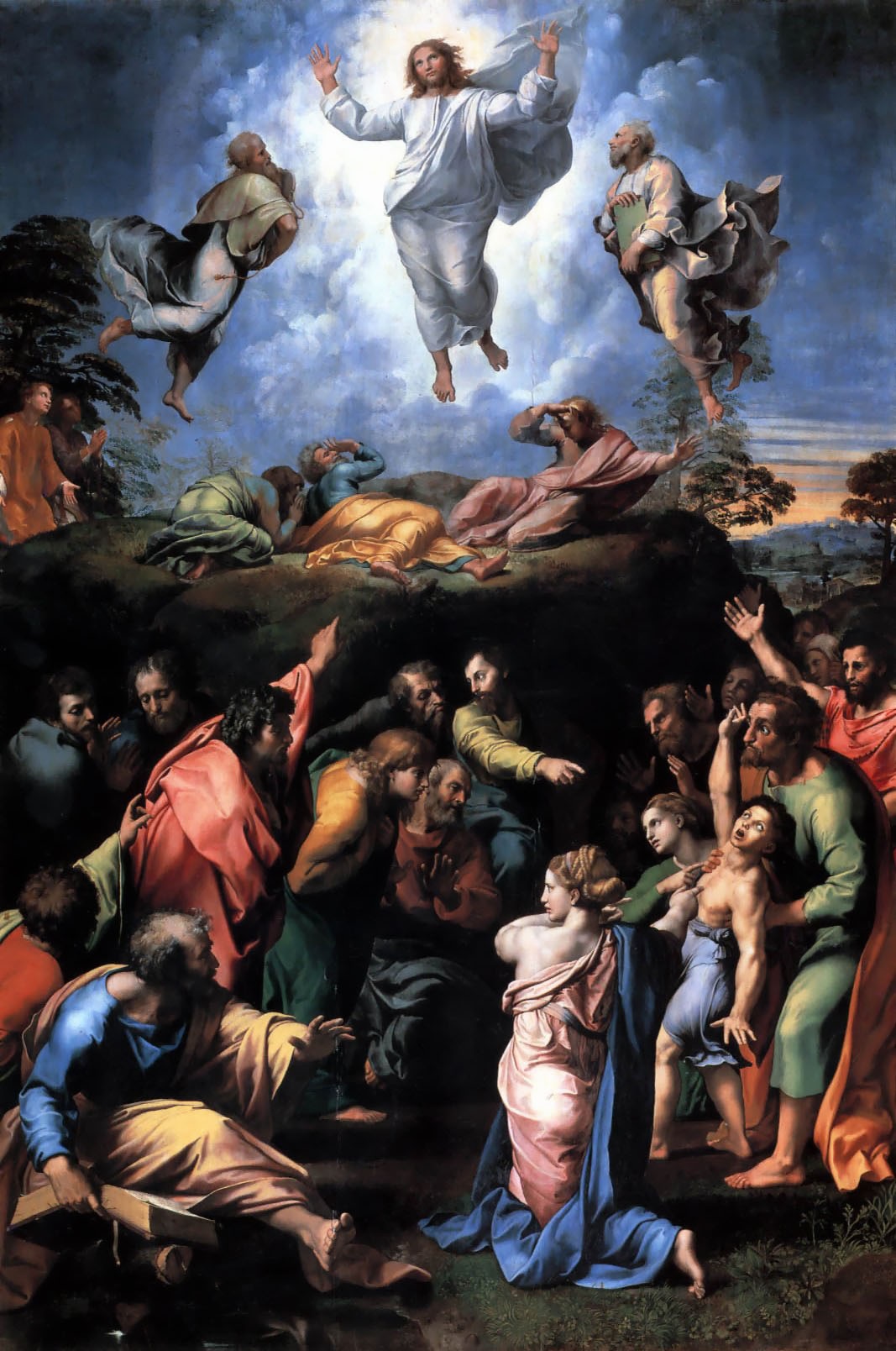
Certainly Raphael’s spookiest painting, the Transfiguration also remains one of Raphael’s most controversial works due in no small part to the fact that it was his last before his untimely death on April 6, 1520—his 37th birthday—from a fever purportedly induced by too much sex with his mistress. Curiously, the painting was to be accompanied by another work, The Raising of Lazarus, by Raphael’s two greatest rivals: the Venetian painter Sebastiano del Piombo and, of course, Michelangelo.
Although the transfiguration of Christ was a popular scene to depict at this time, Raphael—always intrepid and undoubtedly trying to pull one over on Michelangelo once again—decided to combine two biblical scenes in his version. The bottom half shows a boy being exorcised of his demons; the top half portrays Jesus ecstatically reveling in his body’s divine glory (and overawing his onlookers) before he ascends into heaven. The painting ranks in the top three of this list because of its sheer uniqueness: There is no pictorial tradition for this conflation, and none of the interpretations—political, liturgical, theological, or otherwise—offer much insight. It is as idiosyncratic as it is enigmatic. As Christian K. Kleinbub says:
“Being the culmination of Raphael’s lifework, the very summa of visuality in Italian Renaissance painting, Raphael’s Transfiguration remains an incomparable document of its moment and the sophisticated thinking of its maker.” (Texto: ArtNet)
The Sistine Madonna (1512)
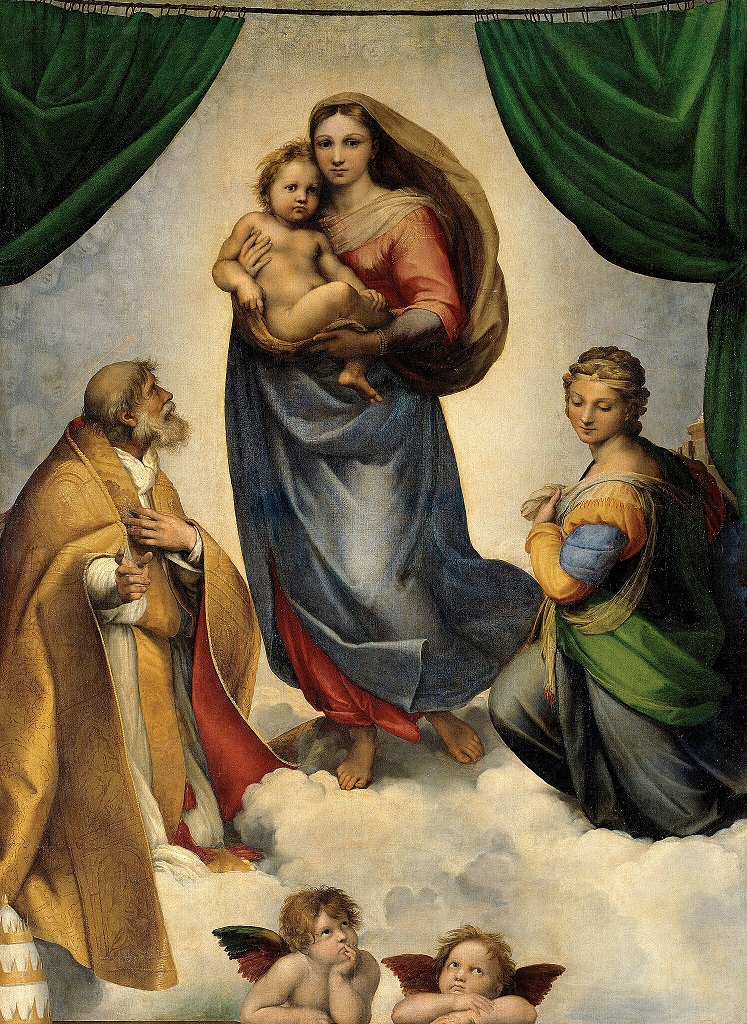
An altarpiece commissioned for the church of San Sisto in Piacenza, this work depicts a cloud-borne Mary and Christ child, both appearing rather concerned, flanked by two saints and seeming to hover against a backdrop of ghostly putti faces. But it’s the two cherubs at the bottom of the canvas that have made the painting famous. One looks above with his chin in his hand, the other looks off to the side with his head resting on crossed forearms; both look bored out of their minds. Their general sulkiness makes them stand out from the typical rosy-cheeked ebullience of most other cherubim throughout art history. Indeed, their distinctive look may have been Raphael’s way of jabbing his good ol’ frenemy Michelangelo. Art Historian Patricia Emison notes:
“The degree of distinction between the two is all the more notable given the necessarily uniform height of Michelangelo’s putti caryatids on the Sistine Ceiling, recently completed, the squirming yet inexpressive pairs of which in some cases can be seen to include both a boy and a girl…. If Raphael at this time, c. 1513, may be taken generally to be in a highly competitive relationship with Michelangelo, it should not surprise us that his cherubs are not only more expressive than the closest figures in Michelangelo’s work, but innovatively and intriguingly so.” (Texto: ArtNet)
Marriage of the Virgin (1504)
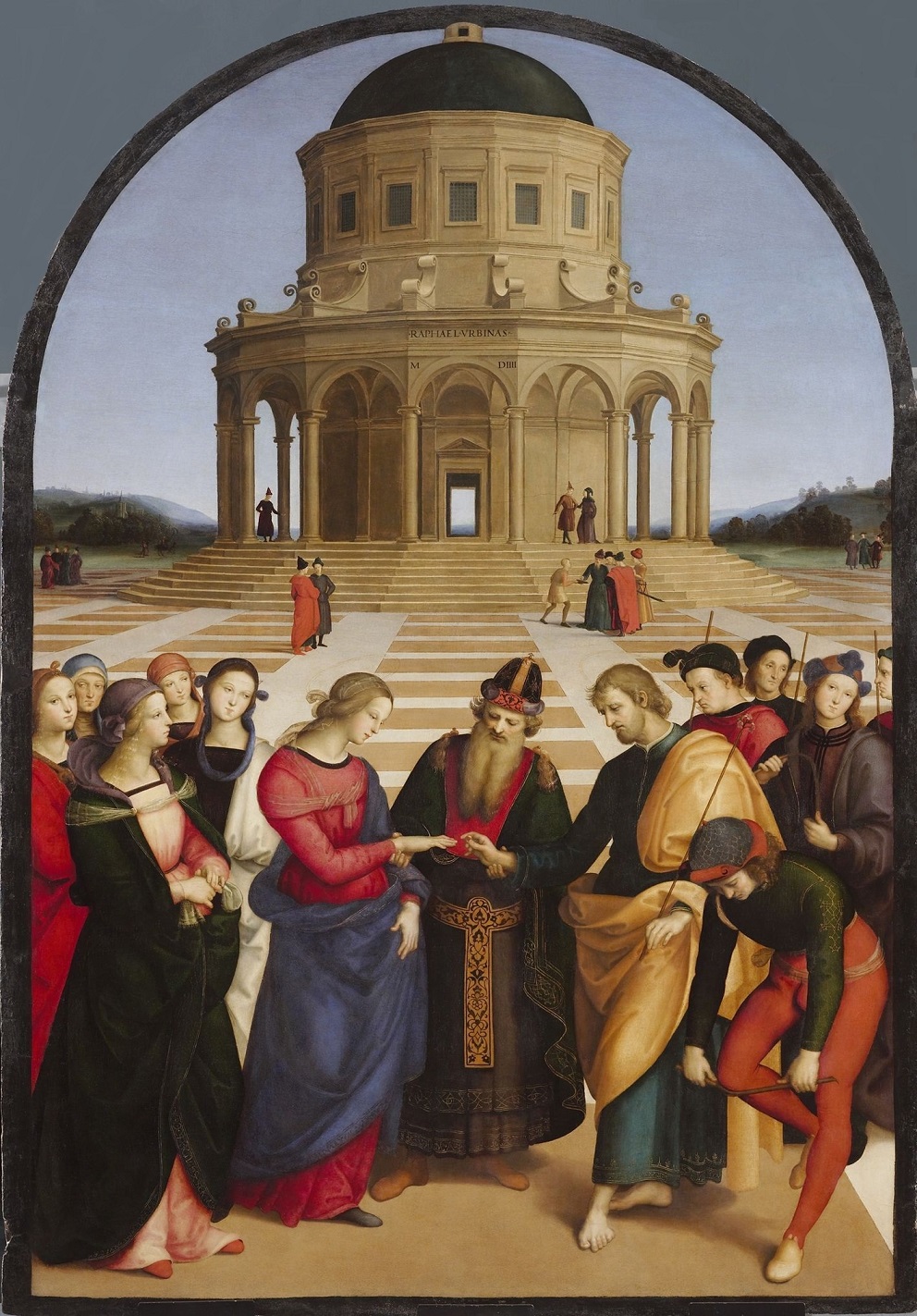
Raphael worked on this painting, also known as Lo Sposalizio, while he was still an apprentice to Perugino. Historians believe he was merely completing a job for a client while his master was out of town, and it’s nearly identical to another painting of the same name Perugino had done shortly beforehand—although many a historian has mooned over Raphael’s superior architectural renderings and more realistic foreground figures. But it’s the young artist’s cheeky signature—inscribed into the cornice of the temple, etched on either side of the painting’s central axis—that lands this early work squarely in the middle of our list. In her essay devoted entirely to the evolution of Raphael’s signature, Rona Goffen notes:
“One of Raphael’s most ostentatious signatures, the Sposalizio inscription is also one of the most audacious in Italian art…. Raphael’s conspicuous assertion of authorial pride signals professional self-awareness and the realization that the altarpiece was a liminal work, a watershed in his career.” (Texto: ArtNet)
Texts: The National Gallery, ArtNet, Wikipedia
The ArtNet texts: Margaret Carrigan
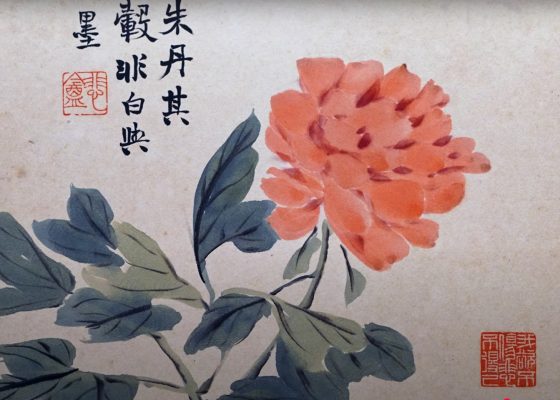

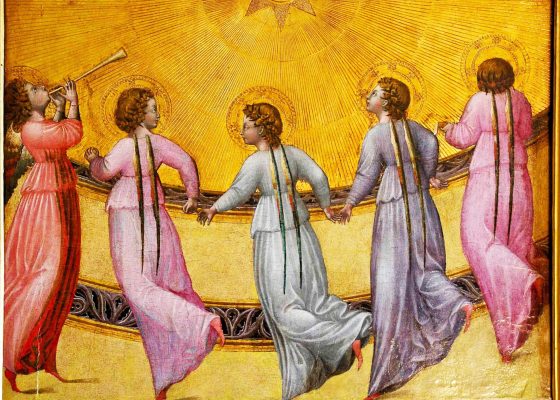
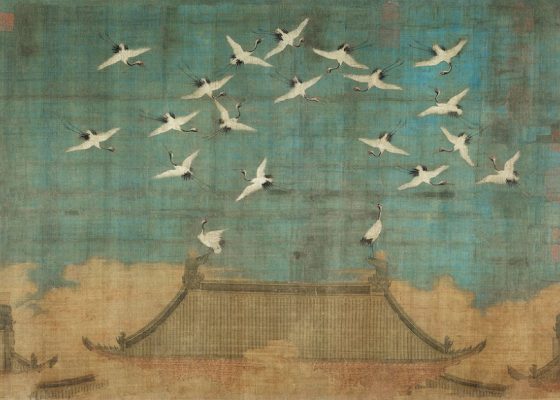



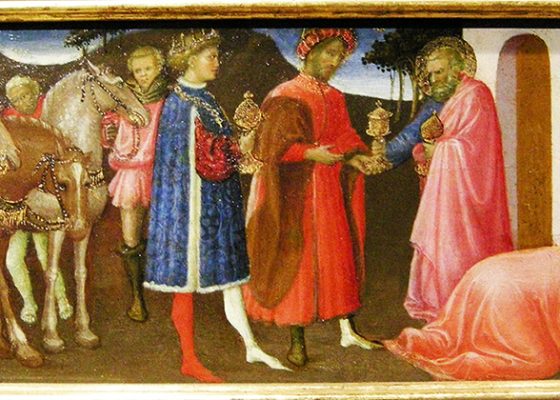


Cancel anytime


Using our website
You may use the The Middle Land website subject to the Terms and Conditions set out on this page. Visit this page regularly to check the latest Terms and Conditions. Access and use of this site constitutes your acceptance of the Terms and Conditions in-force at the time of use.
Intellectual property
Names, images and logos displayed on this site that identify The Middle Land are the intellectual property of New San Cai Inc. Copying any of this material is not permitted without prior written approval from the owner of the relevant intellectual property rights.
Requests for such approval should be directed to the competition committee.
Please provide details of your intended use of the relevant material and include your contact details including name, address, telephone number, fax number and email.
Linking policy
You do not have to ask permission to link directly to pages hosted on this website. However, we do not permit our pages to be loaded directly into frames on your website. Our pages must load into the user’s entire window.
The Middle Land is not responsible for the contents or reliability of any site to which it is hyperlinked and does not necessarily endorse the views expressed within them. Linking to or from this site should not be taken as endorsement of any kind. We cannot guarantee that these links will work all the time and have no control over the availability of the linked pages.
Submissions
All information, data, text, graphics or any other materials whatsoever uploaded or transmitted by you is your sole responsibility. This means that you are entirely responsible for all content you upload, post, email or otherwise transmit to the The Middle Land website.
Virus protection
We make every effort to check and test material at all stages of production. It is always recommended to run an anti-virus program on all material downloaded from the Internet. We cannot accept any responsibility for any loss, disruption or damage to your data or computer system, which may occur while using material derived from this website.
Disclaimer
The website is provided ‘as is’, without any representation or endorsement made, and without warranty of any kind whether express or implied.
Your use of any information or materials on this website is entirely at your own risk, for which we shall not be liable. It is your responsibility to ensure any products, services or information available through this website meet your specific requirements.
We do not warrant the operation of this site will be uninterrupted or error free, that defects will be corrected, or that this site or the server that makes it available are free of viruses or represent the full functionality, accuracy and reliability of the materials. In no event will we be liable for any loss or damage including, without limitation, loss of profits, indirect or consequential loss or damage, or any loss or damages whatsoever arising from the use, or loss of data, arising out of – or in connection with – the use of this website.
Last Updated: September 11, 2024
New San Cai Inc. (hereinafter “The Middle Land,” “we,” “us,” or “our”) owns and operates www.themiddleland.com, its affiliated websites and applications (our “Sites”), and provides related products, services, newsletters, and other offerings (together with the Sites, our “Services”) to art lovers and visitors around the world.
This Privacy Policy (the “Policy”) is intended to provide you with information on how we collect, use, and share your personal data. We process personal data from visitors of our Sites, users of our Services, readers or bloggers (collectively, “you” or “your”). Personal data is any information about you. This Policy also describes your choices regarding use, access, and correction of your personal information.
If after reading this Policy you have additional questions or would like further information, please email at middleland@protonmail.com.
PERSONAL DATA WE COLLECT AND HOW WE USE IT
We collect and process personal data only for lawful reasons, such as our legitimate business interests, your consent, or to fulfill our legal or contractual obligations.
Information You Provide to Us
Most of the information Join Talents collects is provided by you voluntarily while using our Services. We do not request highly sensitive data, such as health or medical information, racial or ethnic origin, political opinions, religious or philosophical beliefs, trade union membership, etc. and we ask that you refrain from sending us any such information.
Here are the types of personal data that you voluntarily provide to us:
As a registered users or customers, you may ask us to review or retrieve emails sent to your business. We will access these emails to provide these services for you.
We use the personal data you provide to us for the following business purposes:
Information Obtained from Third-Party Sources
We collect and publish biographical and other information about users, which we use to promote the articles and our bloggers who use our sites. If you provide personal information about others, or if others give us your information, we will only use that information for the specific reason for which it was provided.
Information We Collect by Automated Means
Log Files
The site uses your IP address to help diagnose server problems, and to administer our website. We use your IP addresses to analyze trends and gather broad demographic information for aggregate use.
Every time you access our Site, some data is temporarily stored and processed in a log file, such as your IP addresses, the browser types, the operating systems, the recalled page, or the date and time of the recall. This data is only evaluated for statistical purposes, such as to help us diagnose problems with our servers, to administer our sites, or to improve our Services.
Do Not Track
Your browser or device may include “Do Not Track” functionality. Our information collection and disclosure practices, and the choices that we provide to customers, will continue to operate as described in this Privacy Policy, whether or not a “Do Not Track” signal is received.
HOW WE SHARE YOUR INFORMATION
We may share your personal data with third parties only in the ways that are described in this Privacy Policy. We do not sell, rent, or lease your personal data to third parties, and We does not transfer your personal data to third parties for their direct marketing purposes.
We may share your personal data with third parties as follows:
There may be other instances where we share your personal data with third parties based on your consent.
HOW WE STORE AND SECURE YOUR INFORMATION
We retain your information for as long as your account is active or as needed to provide you Services. If you wish to cancel your account, please contact us middleland@protonmail.com. We will retain and use your personal data as necessary to comply with legal obligations, resolve disputes, and enforce our agreements.
All you and our data are stored in the server in the United States, we do not sales or transfer your personal data to the third party. All information you provide is stored on a secure server, and we generally accepted industry standards to protect the personal data we process both during transmission and once received.
YOUR RIGHTS/OPT OUT
You may correct, update, amend, delete/remove, or deactivate your account and personal data by making the change on your Blog on www.themiddleland.com or by emailing middleland@protonmail.com. We will respond to your request within a reasonable timeframe.
You may choose to stop receiving Join Talents newsletters or marketing emails at any time by following the unsubscribe instructions included in those communications, or you can email us at middleland@protonmail.com
LINKS TO OTHER WEBSITES
The Middle Land include links to other websites whose privacy practices may differ from that of ours. If you submit personal data to any of those sites, your information is governed by their privacy statements. We encourage you to carefully read the Privacy Policy of any website you visit.
NOTE TO PARENTS OR GUARDIANS
Our Services are not intended for use by children, and we do not knowingly or intentionally solicit data from or market to children under the age of 18. We reserve the right to delete the child’s information and the child’s registration on the Sites.
PRIVACY POLICY CHANGES
We may update this Privacy Policy to reflect changes to our personal data processing practices. If any material changes are made, we will notify you on the Sites prior to the change becoming effective. You are encouraged to periodically review this Policy.
HOW TO CONTACT US
If you have any questions about our Privacy Policy, please email middleland@protonmail.com
The Michelin brothers created the guide, which included information like maps, car mechanics listings, hotels and petrol stations across France to spur demand.
The guide began to award stars to fine dining restaurants in 1926.
At first, they offered just one star, the concept was expanded in 1931 to include one, two and three stars. One star establishments represent a “very good restaurant in its category”. Two honour “excellent cooking, worth a detour” and three reward “exceptional cuisine, worth a
Thank you for your participation,
please Log in or Sign up to Vote
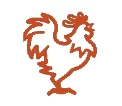
123Sign in to your account